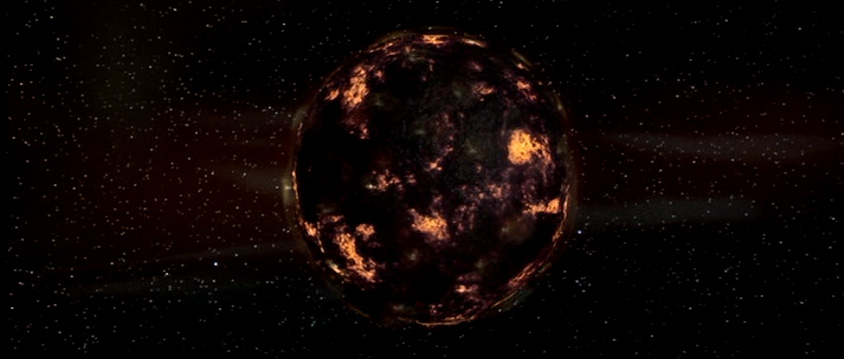Once Fast & Furious (2009) came back on the scene, reuniting Brian O'Conner (Paul Walker), Dominic Toretto (Vin Diesel) and the rest of his crew, knowing sequels were on the way was more than just foresight. The hints were given not only with films prior, but also with teaser footage in the post credits. Amazingly, it has also been one of the few franchises that keeps on going no matter what critics have said previously. However, this is the film that not only topped all of the other installments and was favored the most by critics, but also began to bring the franchise full circle (kind of). Continuing immediately after the last film, O'Conner and his crew break out Dominic Toretto and flee to Brazil. Nonetheless, this does not stop the US government from sending another federal lawman to bring in O'Conner and Toretto. His name is Hobbs (Dwayne Johnson), and he's determined to get the job done that O'Conner failed to do time and again.
 |
| Time to round it up! |
Once in Brazil, Toretto and Co. decide that the only way to be free of all the trouble they've been in for for the last number of films is to rob Reyes (Joaquim de Almeida), a drug lord who controls the local area and use his money to disappear entirely. To do this, O'Conner and Toretto call in their contacts, which span from the prior sequels. Joining the gang is Roman Pierce (Tyrese Gibson), Tej Parker (Ludacris), Han (Sung Kang) and others. The great thing is, the fans of the franchise will definitely enjoy seeing the characters combine forces from beginning to end. Screenwriter Chris Morgan has certainly been improving the way the stories are being told for these characters. My question is since Morgan only began writing for the franchise at The Fast and the Furious: Tokyo Drift (2006), did he plan this from that point? If so, he certainly knows how to plan ahead.
Sadly for timeline continuity, Chris Morgan still hasn't made any sense to why The Fast and the Furious: Tokyo Drift (2006) was written first if that came later. It gets annoying to think about when trying to make sense of it all. To be honest though, the best part about Morgan's screenplay to this entry is the fact that it no longer focuses on revenge, trying to pick sides or anything near that. It's all about breaking free from old chains and it's something everyone strives for in life. There's nothing to say about acting because anyone watching this movie has either followed this franchise from the start or will become attached from here. All the actors maintained their characters charm and personality. It is surprising to see how some of the actors look now though. A lot of the male actors have beefed up considerably, from Vin Diesel, Dwayne Johnson and Matt Schulze. They got huge!
Another impressive visual component is that the cars used are no longer on a high color pallet with neon paint and LED lights made to look and sound like your regular urban crotch rocket. Here, they use slick, dark colored, modern high performance cars and it looks less infantile in style and that’s good. The action / racing is another good element that entertains to a point. I say this because at some points in the movie, the physics do not exactly apply and because this is in a "real-world" setting, what happens in some action scenes aren't the most plausible. There's only so much strain a regular car chassis can handle compared to a van or compared to a truck. Another thing that might annoy people depending on ethnicity is that no subtitles are used for when people speak in foreign languages. It's one thing if its brief but it happens more than enough times for people who are not fluent in the language to get confused.
 |
| Because coming off without a scratch is 100% guaranteed |
The final visual aspect to the film is Stephen F. Windon's cinematography. Considering that he's been on board this franchise since The Fast and the Furious: Tokyo Drift (2006), it seems that he knows what to look for as well. Plus, since this is a car-related movie, one would need a nice backdrop for viewers to look at while things are going on and that's what Windon does here. Much of his shots include beautiful scenery of the Brazilian landscape; from the mountains to urban terrain. Finally, completing the listening experience is Brian Tyler's musical composition. Like much of the other music he produced for the prior entries, again going back to The Fast and the Furious: Tokyo Drift (2006), it’s fairly generic music. However, Tyler is able to convey the right tunes for the sentimental moments and action cues. To do this, like he's done in the past, he's used a mix of electronic synths and an actual orchestra. So far, he's doing a good job but hopefully he'll make a more memorable theme for the franchise at some point.
Viewers should enjoy the direction in which their favorite characters go from here. Plus, rejoining the cast from prior entries, adding new characters and maturing the visual style is an added bonus. The only quip fans may have are the omitted subtitles and the action does entertain, but may get a bit out of control for its realistic setting.
Points Earned --> 6:10





